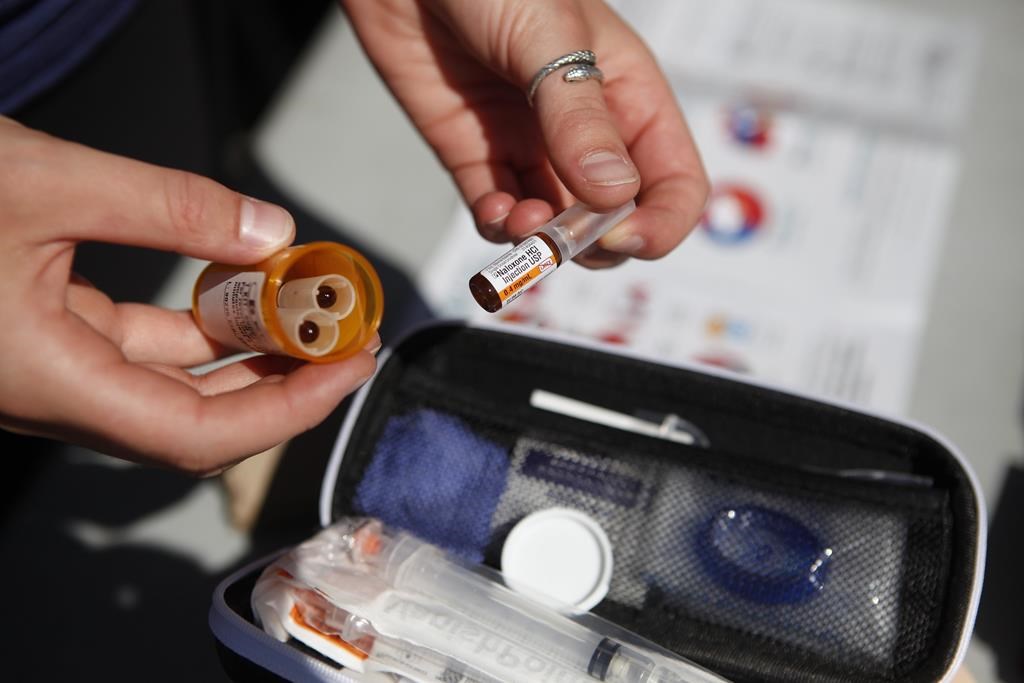Winnipeg’s drug supply has become more deadly than ever, which means it’s become more difficult to revive people experiencing an overdose.

The Winnipeg Fire Paramedic Service (WFPS) says it has seen a significant increase since 2016, responding to between 10 and 15,000 overdose calls each year.
Corey Guest with the WFPS told 680 CJOB’s The Start that a major factor is the mixed bag of drugs out on Winnipeg streets today.
“We’re seeing a lot of polysubstance use, so people are using multiple different drugs,” said Guest, the service’s public education coordinator. “We know how our patients are presenting — they’re presenting like they’re taking a variety of different drugs. The lethality and the toxicity, I’ll say, of the current drug supply is making people very, very sick.”
Because of this, use of the opioid antagonist naloxone has skyrocketed, but Guest said the drug supply is often laced, with paramedics seeing a lot of substances like xylazine — a drug that doesn’t respond to naloxone — in the supply over the past six months.
“The treatment that perhaps would have worked a month ago, two years ago, five years ago, is more difficult today — and I think that speaks to the toxic drug supply,” he said. “People are getting drugs and they don’t always know what is in it.”
And despite stereotypes, overdoses can be found city-wide, often in areas that might surprise some Winnipeggers, where it’s easier to hide substance use.
“Folks that don’t have a home to hide their trauma or their substance use in perhaps make society think that it only happens ‘down there’, it only happens to ‘those people’, and that’s quite false,” Guest said. “We have the disluxury, I’ll say, of going into the peripheries of Winnipeg where we see the addiction, where we see the trauma, but people can hide those issues in their big fancy home. ”

A new report from a local outreach group aims to paint a clearer picture of the city’s addiction crisis.
The report, from Resource Assistance for Youth (RAY), identifies a number of overdose hotspots — places where naloxone treatments are needed most.

Get weekly health news
RAY’s Breda Vosters told The Start the West Broadway area was identified as the biggest hotspot, home to 76 per cent of overdose calls, but calls are coming from a wide range of areas, even including Wolseley and Wellington Crescent. Vosters said the area around Polo Park was also notable.
“There was a significant number also around the Polo Park area, which is a bit shocking given that there aren’t a large number of service providers over in that region of the city. We really need services to be available everywhere in our city, and we need to be able to meet people where they’re at — because folks in need are everywhere,” Vosters said. “We have to do more to be able to meet those needs and to bring folks the things that they require.”
The report also found that around 68% of overdoses happened within 200 meters of a naloxone distribution site, data that is still being examined, but Vosters said one reason is likely that sites with easily accessible naloxone often provide other resources for those with addictions.
“The availability of resources is really one of the number-one things that brings people to these places. A lot of naloxone distribution sites are also service centres, so there are a lot of people who are kind of naturally in those areas.”

Marion Willis of St. Boniface Street Links says the crisis is part of the bigger problem across our city — a problem that includes homelessness as well as the ongoing aftermath of the COVID-19 pandemic.
Willis said the “chronic homelessness” of the past has morphed into one fuelled and sustained by drug use, with an unsafe supply resulting in more overdose calls.
While it’s important to grassroots community leaders to inform government officials of what’s going on at the street level, it’s also incumbent upon leadership at City Hall and the Manitoba Legislature to listen.
“We need to be able to inform government so that government has a clearer understanding of what’s happening out here,” Willis said. “If you don’t understand it, then you can’t really address it in the ways it needs to (be addressed).”
Willis says an “old school” way of thinking won’t cut it anymore.
“It should be really easy for everybody to look through that lens and understand the interrelatedness between all of these issues and see just how dire a need there is for a plan.”










Comments